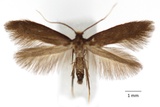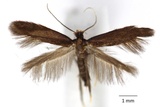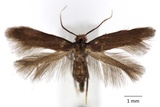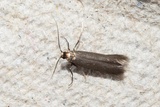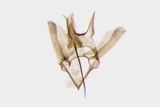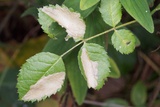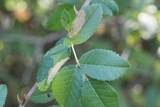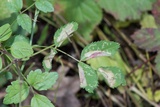Coptotriche angusticollella (Duponchel, 1843) Species
Last modified: July 1, 2025, 8:27 p.m.
A rather common but local species in Belgium, mainly known from the southern provinces, especially in the limestone area.
Details
- Classification
- Family: Tischeriidae > Genus: Coptotriche > Species: Coptotriche angusticollella
- Vernacular names
- Rozenvlekmot (NL), Rose Carl (EN), Rosen-Schopfstirnmotte (DE)
- First mention in Belgium
- Fologne E. 1860. Lépidoptères et chenilles observés en Belgique. — Annales de la Société entomologique belge 4: 108–112. On page 112 (as Tischeria Angusticolella, Heyd.). view page
- Status
-
Native
Distribution
Caterpillar
The caterpillar is dark yellow to light brown. The thoracic segments are usually broader than the abdominal ones. Its head capsule, first thoracic segment and last abdominal segment are blackish.
Mine
The mine consists of an opaque white gallery on the upperside of a leaflet, soon widening into a whitish blotch and most of the time occupying one half of the leaf. But in later stages, it covers the whole leaflet and turns a little bit darker. Frass is ejected through a hole in the epidermis.
See also bladmineerders.be
Cocoon/pupa
No cocoon is formed.
Bionomics
The eggs are oviposited on the upper side of a leaf. In many cases, each leaflet of leaf contains one egg. Leaves close to the ground are preferred. The last instar caterpillar applies some spinning inside the mine, causing the leaflet to fold lengthwise and envelop the entire mine.
The pupation takes place inside the mine without constructing a cocoon. The species hibernates in the pupal stage, among leaf litter on the soil.
Flight periods
The adults fly in two generations a year from May to June and again during July–August.
Observed on
- Host plant (species):
- Rosa canina
- Host plant (genera):
- Rosa
The species if monophagous on Rosa-species, especially Rosa canina.
Habitat
This species occurs in parks, gardens, ...
